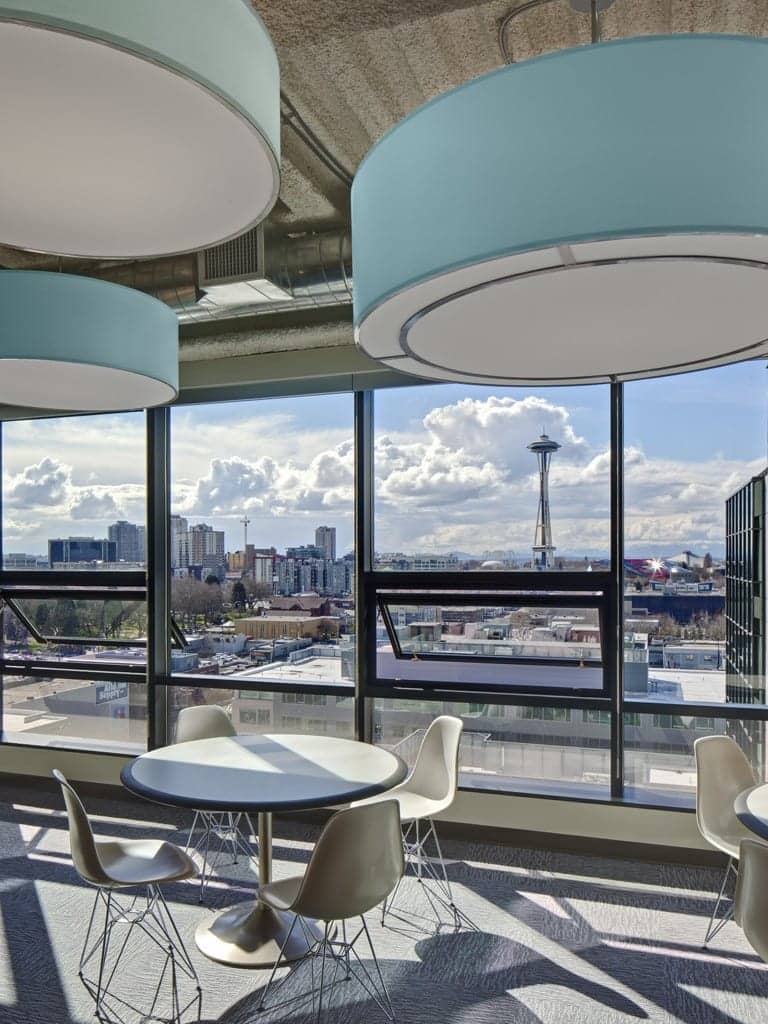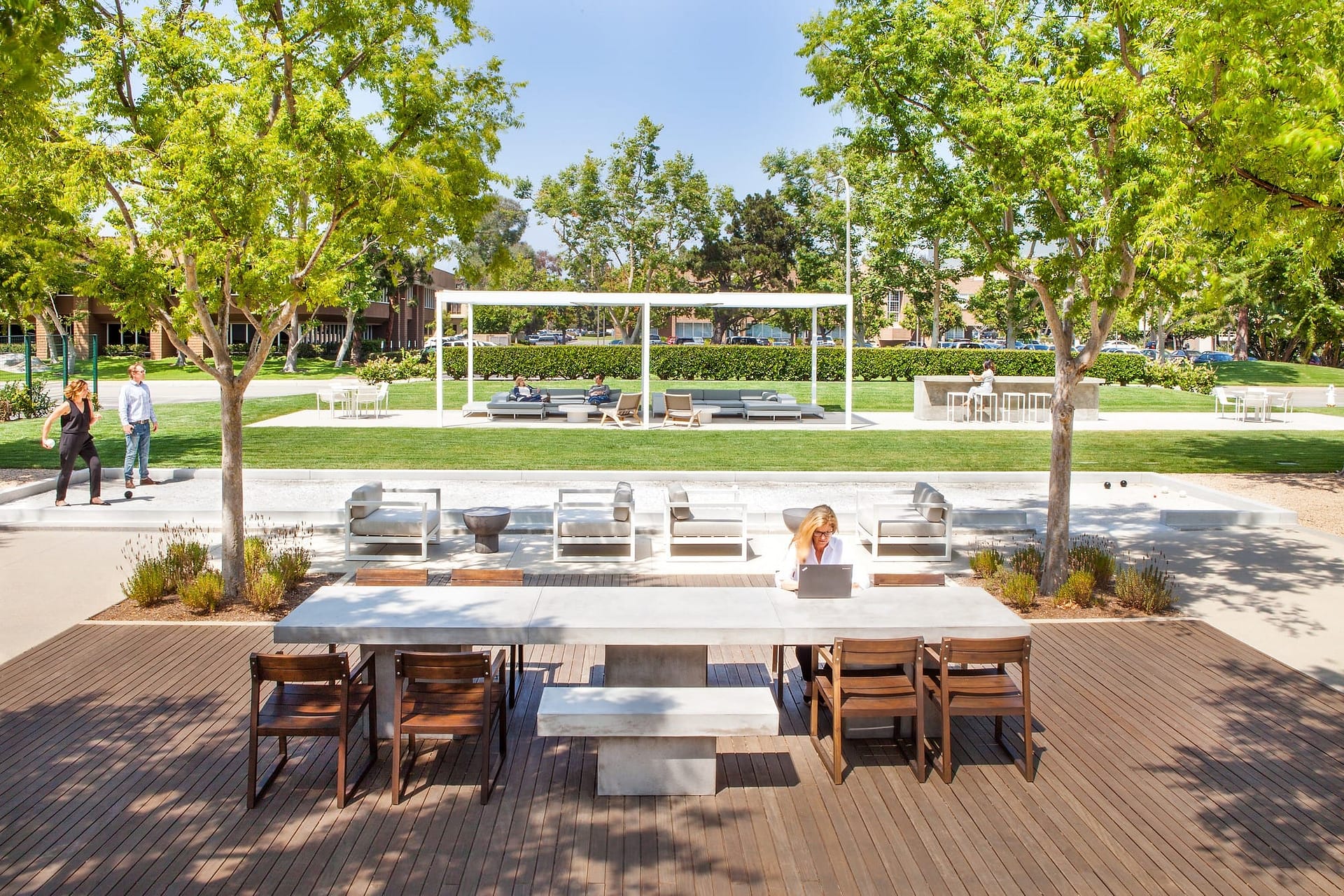The interplay of sunlight and shadow on the built environment has long been understood by architects and designers. They use that knowledge to full advantage, changing structure, modifying walls, or adding windows and atriums for optimum effect, efficiency, and delight. Although shadows seem to be a reflection, they represent the absence of light. An opaque object that sunlight cannot permeate casts a shadow, which changes shape as the sun moves through the day. Here are some favorite examples of shadow play from IA’s portfolio.
More...

This space is bathed with light and shadow from the atrium above. Confidential Client, Barcelona. Photographer Jose F. Parreno.

The pattern of light and shadow will change when the garage doors are opened to the patio. H-E-B Digital / Favor Delivery, Austin, TX. Photographer Peter Molick.

Everything works together here—the shape of the chairs with angled legs, the angled shadows created by the window structure. Confidential Client, Seattle. Photographer Sherman Takata.

Dappled sunlight makes a great place to work—or picnic. Dove Reposition, Newport Beach, CA.

Light and shadow contribute to mood, here serene but upbeat. Confidential Client, Milan. Photographer Barbara Corsico.

Alternating sunlight and slender shadows define space. Confidential Client, Chicago. Photographer Garrett Rowland.

A play of light and shadow illuminates the lobby, anticipating an event. Sandy Springs City Center, Sandy Springs, GA. Photographer Zach Rolen.

A mosaic of shadows complements a mosaic-patterned wall. Confidential Client, Milan. Photographer Jose F. Parreno.

